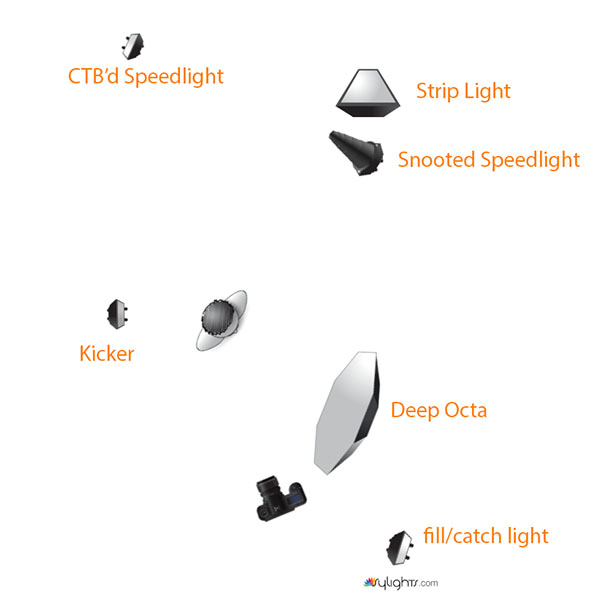After a few too many drinks one night, Paige Cutland decided to start a brewery: Hogsback. The first subject of my series produced for Ottawa Magazine, we were to meet with Paige at the “Keggerator” which, unlike a home one, holds *all* the kegs for the market. This location was a real blessing, as the day was one of the first real hot ones of the summer. Sitting at a consistent 15 degrees Celsius. Setting up in a large room filled with reflective cylinders, was a little more tricky.
Thankfully time wasn’t an issue, we got in early and didn’t tell Paige to show up for another hour. We had to figure out the shot and how to light it. What lighting there was, was dim and fluorescent, certainly not bright enough to contribute to the ambient exposure of the camera. A blessing in disguise, actually, since there was some mess in the shadows we’d rather not show off.

We started by building out the main light for a subject, the dark room called for the punchy contrast the Elinchrom Deep Octa can bring. For my motivated and toned lighting project, I gel’d the main light with a 1/2CTS (Straw) and 1/2CTG (Green). The green would have balanced the light to fluorescent, the straw warms that up. What we get is a warmish green light, that I can move around to add magenta to the scene if I wanted to inject a bit more colour, or just to neutralize it to warm. After doing this, all the other light sources we wanted to be “neutral” had to follow this same gel pattern. Another challenge was giving depth to the room with a limited number of strobes and speedlights. We boomed a strip light high to the back, just out of frame, to give the kegs a long stripped reflection – this defined the back of the room. I had to snoot a speedlight to get a bit more light on some closer kegs, without letting it bleed over and create weird shadows. To light the mid-ground we simply Justin-clamped a speedlight to an empty rack and bounced it off the aluminium siding. It kind of mimics a potential overhead light, though it is a bit bright now that I look at it.
Once page arrived I realized we needed two more lights, a kicker to separate him from the background, which was a simple speedlight zoomed in, and another was an LP160 speedlight at low power, bounced off the aluminium wall behind me to fill in the shadows a bit and, most importantly, adding a bit of sparkle to Paiges eyes. Like all the images in this series, I chose to shoot it at 24mm with a tilt shift lens to create a super-high res panorama for print.
Thanks again to Dave Hassar for the amazing job assisting on this shoot – not a bad first gig together I think. Yes, we did get free samples. Check it bigger on Flickr too.
This one's my favourite of the bunch (although I loved the bedroom shot, too). Nice work, Justin.